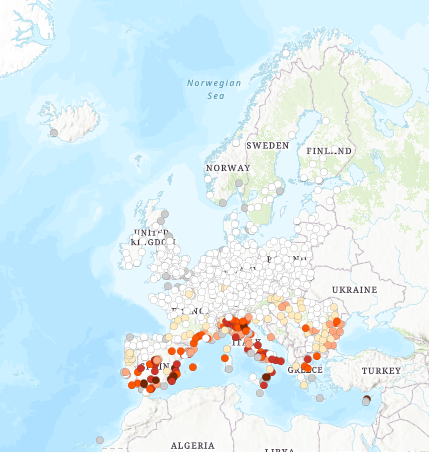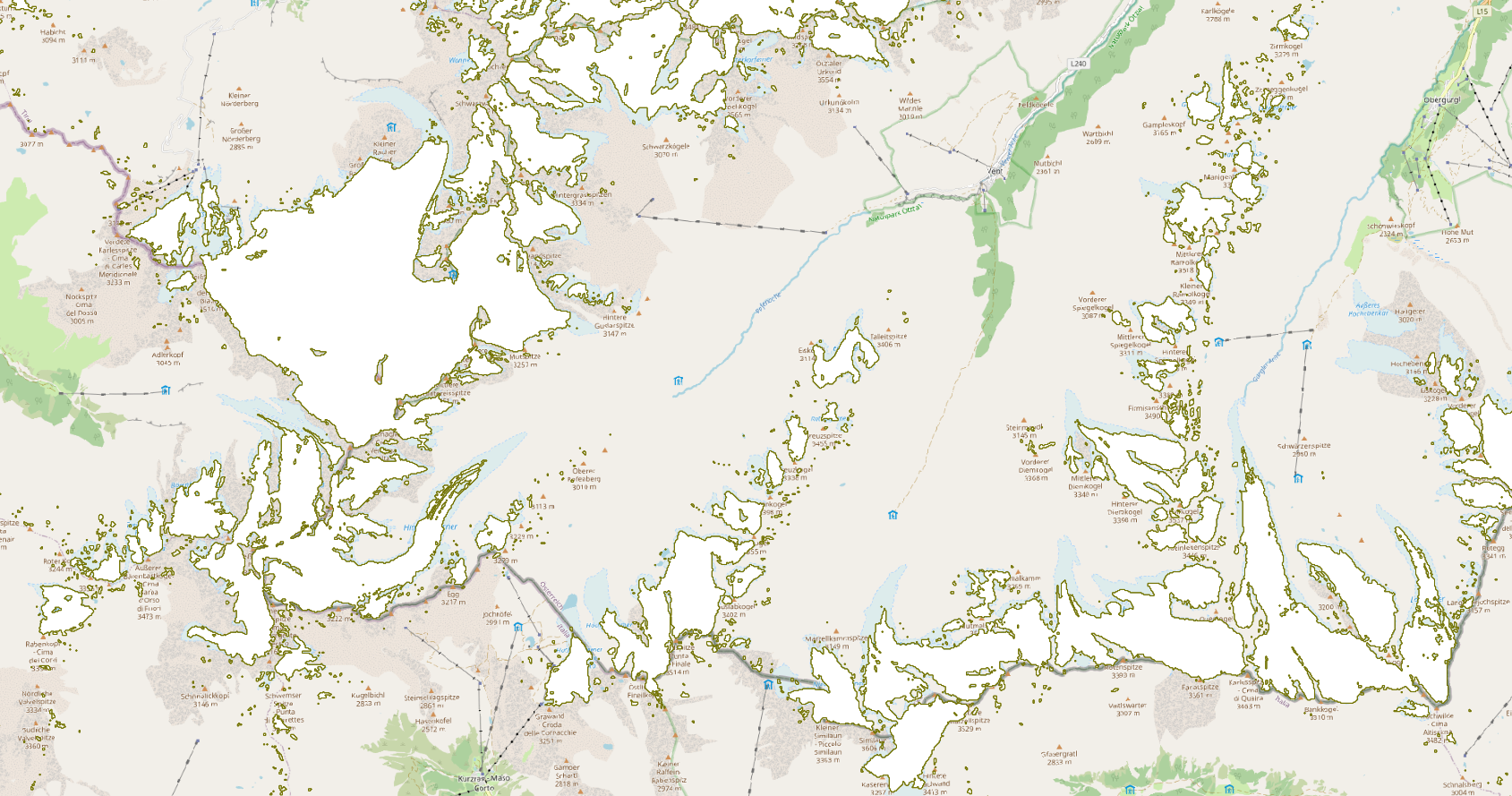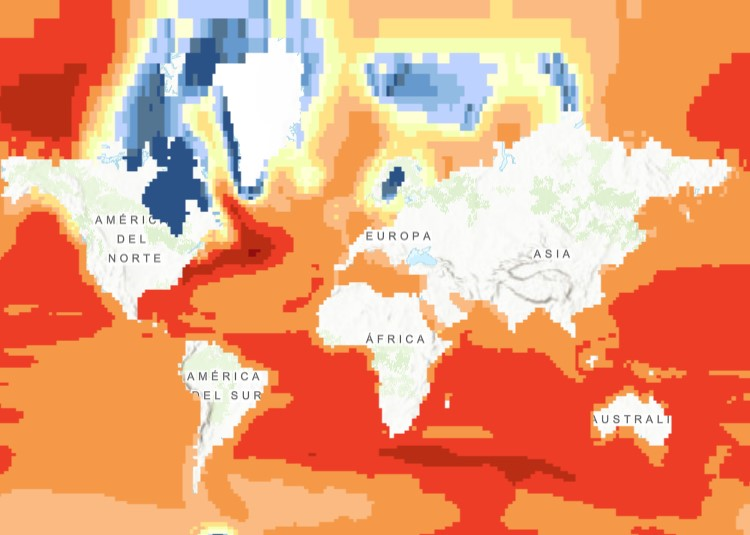climate change impact
Type of resources
Available actions
Topics
INSPIRE themes
Keywords
Contact for the resource
Provided by
Years
Formats
Representation types
Update frequencies
Scale
Resolution
-

The dataset presents average values of the number of days per year where the maximum temperature has exceeded 35 degrees Celsius from the period 1987- 2016, for a series of individual European cities from Eurostat's Urban Audit 2011-2014 spatial dataset. The associated values are based on the E-OBS dataset from the EU-FP6 project ENSEMBLES (http://ensembles-eu.metoffice.com) and around 10,000 meteorological stations across Europe. This dataset has been used also in the EEA Report No 22/2018 "Unequal exposure and unequal impacts: social vulnerability to air pollution, noise and extreme temperatures in Europe" (https://www.eea.europa.eu/publications/unequal-exposure-and-unequal-impacts/at_download/file).
-

The gridded dataset presents the average forest fire danger in the present climate for the period 1981-2010 in Europe. The forest fire danger is expressed by the average Seasonal Severity Rating index (derived from the Canadian Fire Weather Index System), provided by the Joint Research Centre. The SSR series was computed usign the GCM-RCM run KNMI-RACMO2-ECHAM5 of ENSEMBLES project. The dataset contributes to the EEA indicator "Forest fires": https://www.eea.europa.eu/data-and-maps/indicators/forest-fire-danger-2/assessment
-

The dataset presents the average number of combined hot days - with maximum temperature over 30 degrees Celsius - and tropical nights - with minimum temperature over 20 degrees Celsius - in the period 1987-2016, for a series of individual European cities from Eurostat's Urban Audit 2011-2014 spatial dataset. The associated values are based on the E-OBS dataset from the EU-FP6 project ENSEMBLES (http://ensembles-eu.metoffice.com) and around 10,000 meteorological stations across Europe. The combination of hot days and warm nights is particularly dangerous to human health, as the high temperatures during night time does not allow for the cities and buildings to cool down. Such combination, if lasting over several days (heatwaves) can have severe health implications or even be fatal to the elderly, babies or those in poor health. Therefore, the knowledge of the occurrence of such conditions in a given location can be useful in planning adaptation to the changing climate and protection of the vulnerable groups from heat. This dataset has been used also in the EEA Report No 22/2018 "Unequal exposure and unequal impacts: social vulnerability to air pollution, noise and extreme temperatures in Europe" (https://www.eea.europa.eu/publications/unequal-exposure-and-unequal-impacts/at_download/file).
-

This vector dataset presents the extent of areas in European countries directly affected by wildfires (period 2000-2017). This dataset can be used as one of the indications where the danger of wildfires may persist or increase in the future under the changing climate. The dataset is one of the output of the “European Forest Fire Information System-EFFIS” (http://effis.jrc.ec.europa.eu) provided by the Joint Research Centre (JRC). The dataset is also part of the EEA indicator "Forest fires": https://www.eea.europa.eu/data-and-maps/indicators/forest-fire-danger-2/assessment.
-

The Copernicus Persistent Snow Area (PSA) product is directly derived from the Fractional Snow Cover (FSC) information. It is generated on a yearly basis for the entire EEA38 and the UK and provides the extent of the persistent snow cover, i.e. the area where snow is present throughout the hydrological year with a spatial resolution of 20 m x 20 m. PSA is one of the products of the pan-European High-Resolution Snow & Ice service (HR-S&I), which are provided at high spatial resolution (20 m x 20 m), and are derived from the Sentinel-2 constellation data. They are generated over the entire EEA38 (32 member countries and 6 cooperating countries) and the United Kingdom, from September 1, 2016 onwards. Four types of HR-S&I products are proposed to users: the Fractional Snow Cover (FSC) product, the Persistent Snow Area (PSA) product, the River and Lake Ice Extent (RLIE) product and the Aggregated River and Lake Ice Extent (ARLIE) product. PSA is delivered in two different projections: (1) as tiles aligned with Sentinel-2 (UTM/WGS84) at 20 m x 20 m GSD; and (2) as tiles aligned with the Pan-European High-Resolution Layers in the European 20 m x 20 m grid (ETRS89 LAEA - EPSG: 3035). It is typically released on an annual basis with a release date in October, after the end of the hydrological year. Each PSA product is composed of two separate files corresponding to the two layers of the product, and another file containing metadata.
-

The raster dataset (1ºx1º) shows the projected change in relative sea level (in metres) in 2081-2100 compared to 1986-2005 for the medium-low emission scenario RCP4.5, based on an ensemble of Coupled Model Intercomparison Project Phase 5 (CMIP5) climate models. Projections consider land movement due to glacial isostatic adjustment but not land subsidence due to human activities. No projections are available for the Black Sea. The dataset has been used as a source for an earlier version of the EEA indicator “Global and European Sea Level”: https://www.eea.europa.eu/data-and-maps/indicators/sea-level-rise-5/assessment.
-

The gridded dataset presents the forest fire danger in Europe for projected climate conditions under the Representative Concentration Pathways (RCP) 4.5 scenario for the temporal range 2071-2100. The forest fire danger is expressed by the average Seasonal Severity Rating index (derived from the Canadian Fire Weather Index System), provided by the Joint Research Centre. The SSR series was computed usign the GCM-RCM run KNMI-RACMO2-ECHAM5 of ENSEMBLES project. Average 2071-2100 SSR levels are provided in the dataset. The dataset contributes to an earlier version of the EEA indicator "Forest fires": https://www.eea.europa.eu/data-and-maps/indicators/forest-fire-danger-2/assessment.
-

This dataset represents the observed trend in maximum annual five day consecutive precipitation over Europe, between 1960 and 2015, during the winter season (December, January, February). Heavy precipitation events have become more intense and more frequent in Europe on average, but there are important differences across regions, seasons, time periods, heavy precipitation indices and underlying datasets. Studies generally agree that heavy precipitation has become more intense in northern and north-eastern Europe since the 1950s, even though not all changes are statistically significant. Different studies and indices show diverging trends for south-western and southern Europe. Heavy precipitation may lead to local surface water flooding in cities, therefore should be considered in adaptation planning. This dataset is used also in the EEA Indicator "Heavy precipitation in Europe": https://www.eea.europa.eu/data-and-maps/indicators/precipitation-extremes-in-europe-3/assessment, which in the meantime has been updated.
-

The raster dataset (grid 0.25° x 0.25°) presents the trends in frequency of meteorological droughts between 1950 and 2012. Trends are based on a combination of three different drought indices - SPI (Standard Precipitation Index), SPEI (Standardized Preciptation Evapotranspiration Index) and RDI (Reconnaisance Drought Index) accumulated over 12-month periods. The dataset contributes to an earlier version of the EEA indicator "Meteorological and hydrological droughts": https://www.eea.europa.eu/data-and-maps/indicators/river-flow-drought-2/assessment
-

This gridded dataset presents the projected changes (in percentage) in heavy precipitation in winter season (December, January, February) in Europe, from 1971-2000 to 2071–2100 for the Representative Concentration Pathways (RCP) 8.5 scenario, based on the ensemble mean of different Regional Climate Models (RCMs) nested in different General Circulation Models (GCMs). This dataset is an output of the EURO-CORDEX data, produced in the context of the EURO-CORDEX initiative. EURO-CORDEX is the European branch of the CORDEX initiative, producing ensemble climate simulations based on multiple dynamical and empirical-statistical downscaling models forced by multiple global climate models from the Coupled Model Intercomparison Project Phase 5 (CMIP5). More information about this initiative on: https://www.euro-cordex.net/060374/index.php.en. The dataset has been used in the EEA Indicator "Heavy precipitation in Europe": https://www.eea.europa.eu/data-and-maps/indicators/precipitation-extremes-in-europe-3/assessment, which in the meantime has been updated.
 RUC Geo-Data catalogue
RUC Geo-Data catalogue